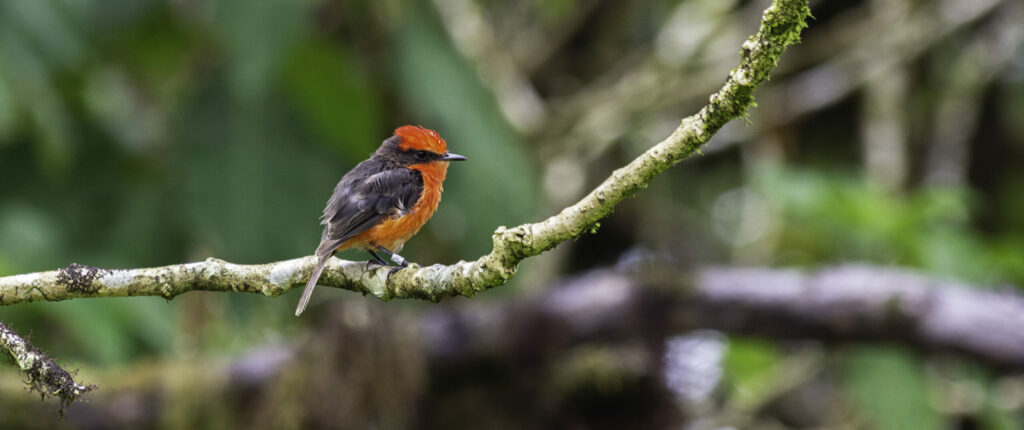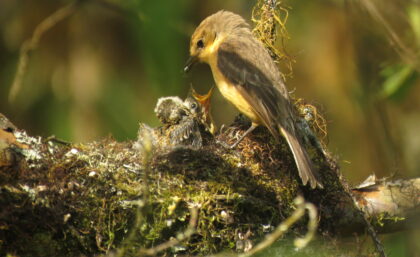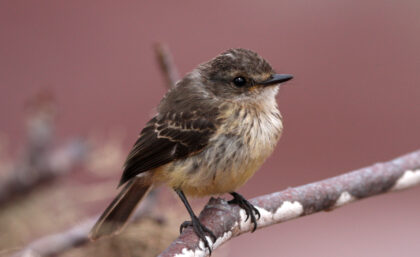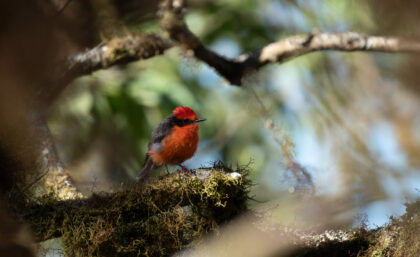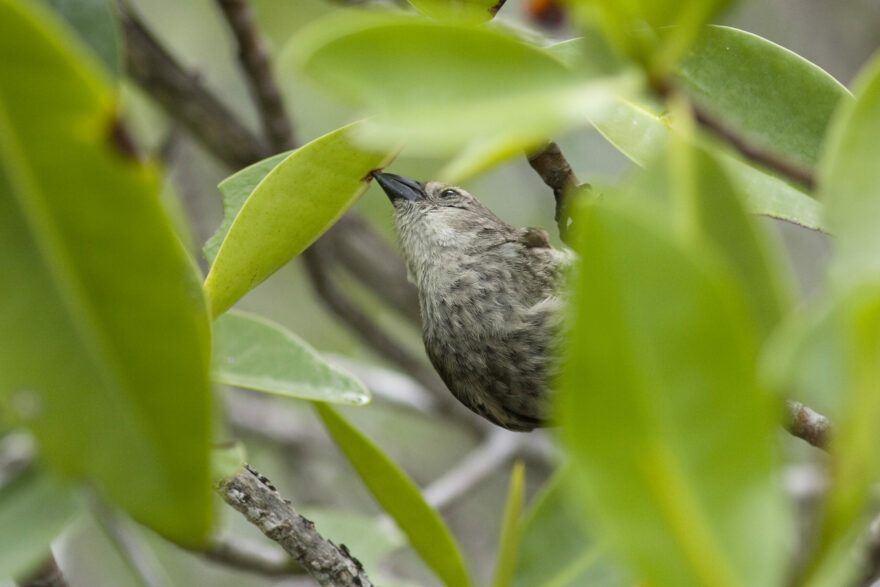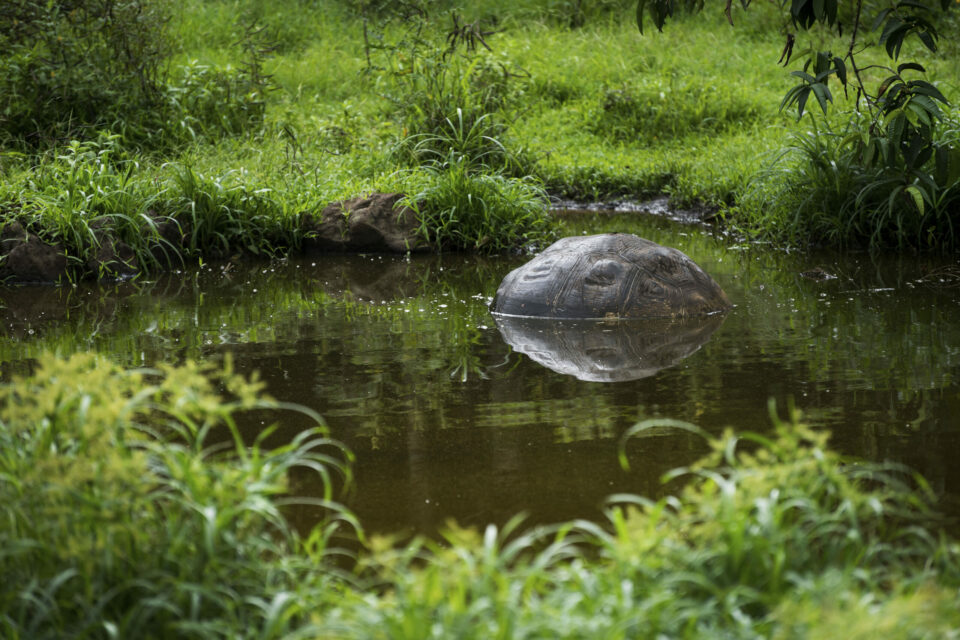

Overview
The little vermilion flycatcher, along with the now-extinct San Cristobal vermilion flycatcher, is endemic to Galapagos. Whilst a favourite amongst locals and visitors alike, this brilliantly coloured songbird is declining at an alarming rate.
Project Partners



The problem
After reclassification in 2016, the little vermilion flycatcher (Pyrocephalus nanus) was made a separate species from its now-extinct relative, the San Cristobal vermilion flycatcher (Pyrocephalus dubius). Unfortunately, the same threats that led to the San Cristobal vermilion flycatcher’s extinction, including invasive species such as rats, threaten the little vermilion flycatcher today. In fact, it is locally extinct on Floreana island, close to extinction on Santa Cruz island and under threat on Isabela island.
Research on the three population sites of little vermilion flycatchers found that the invasive parasitic fly, Philornis downsi, was a major threat. The fly’s larvae feed on the young of many land birds in Galapagos and are one of the main drivers of population declines. However, in Mina Roja on Santa Cruz, many of the abandoned nests showed few signs of P. downsi infestation, which suggests that this might not be the reason behind low breeding success rates on this island.
The little vermillion flycatcher requires an open area for foraging, so another suggestion for the population decline is the spread of the invasive raspberry plant (Rubus niveus). This plant creates dense thickets which prevent successful feeding.
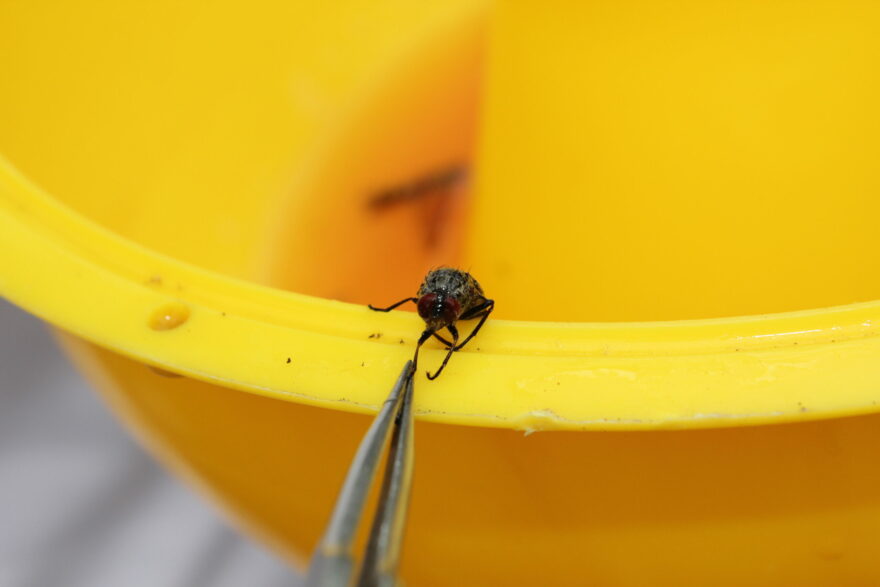
How we’re tackling it
To reverse the decline of endemic land birds, including the little vermilion flycatcher, as quickly as possible, the Charles Darwin Foundation (CDF) and the Galapagos National Park Directorate (GNPD) formed the Landbird Conservation Program in 2014. This programme counts on the help of Galapagos residents, visitors and researchers from around the world, and is investigating multiple options simultaneously for the protection of iconic bird species. Galapagos Conservation Trust has supported the project since the end of 2019 to increase the number of little vermilion flycatchers on Santa Cruz.
Efforts to remove the invasive raspberry plants from Mina Roja on Santa Cruz will increase to allow for the restoration of the Scalesia forest habitat, interspersed with open areas for breeding and foraging. The team will also reduce the pressure from invasive species, including both rats and P. downsi larvae. The latter will be achieved using techniques trialled by the mangrove finch project team, who have increased the number of young birds surviving into adulthood through in-nest treatment of P. downsi larvae with insecticide.
Photo gallery
Click on an image to view larger

Project goals
The project aims to:
- Restore the Scalesia forest (interdispersed) with semi-open areas for little vermilion flycatchers as breeding and foraging grounds.
- Reduce predator pressure in the area by regular rat control through baiting.
- Increase fledgling success of little vermilion flycatcher nests that are infested with larvae of P. downsi.
Project updates

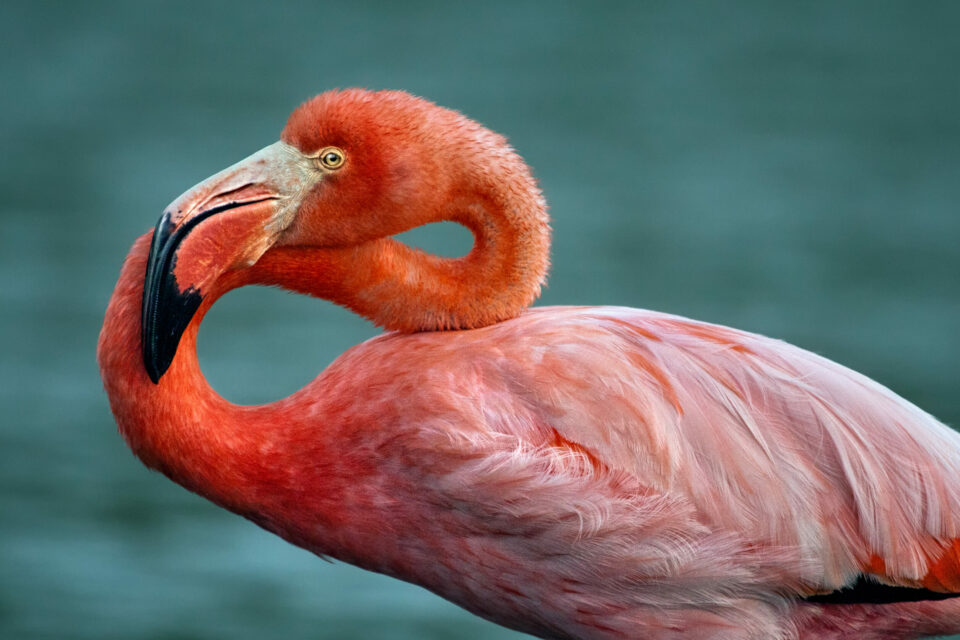
5 of the most colourful birds in Galapagos

Galapagos Day 2023: Rewilding Galapagos

Rewilding Galapagos: Giving nature a helping hand
How you can help
With your help, we can safeguard the future of these Enchanted Isles.
